Banned Book Awards champions children’s right to read
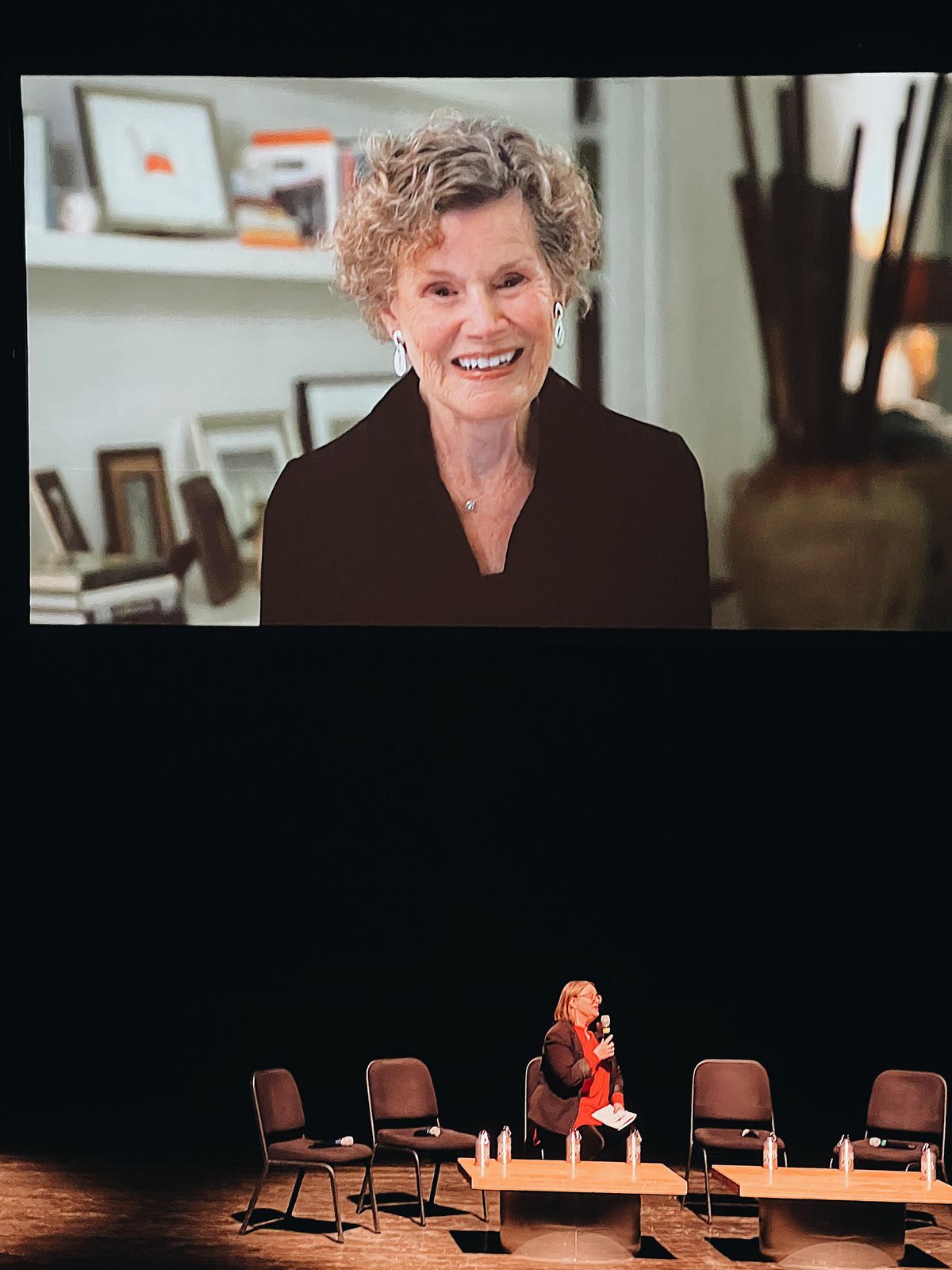
Judy Blume connected digitally at the ceremony and was honored with a lifetime achievement award.
Alexander Wilburn

Judy Blume connected digitally at the ceremony and was honored with a lifetime achievement award.
There can be no question that democratic freedoms are currently being attacked and restricted in the United States, and somehow, children and the information they have access to have been the ongoing targets of attack.
As AP News reported in 2023: “More than 1,200 challenges were compiled in 2022, nearly double the then-record total from 2021 and by far the most since the American Library Association began keeping data 20 years ago.” Conservative groups across the country have become well-organized machines harassing individual public and school librarians with threats of legal and violent action. The message from these groups, often supported by government leaders, is that children should not have access to books — books meant for young readers — that engage with topics of race, gender or sexual identity.
At Fisher Center at Bard College, the inaugural Eleanor Roosevelt Banned Book Awards was held Saturday night, Feb. 17, honoring a group of middle-grade and young adult authors with the first Awards for Bravery in Literature. These recipients, authors of some of the most challenged books in the country by counties, local governments and school boards, were acknowledged for their literary accomplishments and for championing stories full of independent thought, compassion and important social messages.
The award ceremony was hosted by Anna Eleanor Fierst, Roosevelt’s great-granddaughter and chair of the Eleanor Roosevelt Center at Val-Kill. Fierst was joined on the stage by speakers Emily Drabinski, the president of the American Library Association; George McCalman, author of “Illustrated Black History: Honoring the Iconic and Unseen”; Matt Nosanchuck, the deputy assistant secretary for operations and outreach in the Office for Civil Rights at the U.S. Department of Education; Lee Rowland, policy director at the New York Civil Liberties Union (NYCLU); and Cameron Samuels, a student at Brandeis University and the executive director of SEAT, a youth civic organization. Last year, at age 18, Samuels testified before the Senate Judiciary Committee addressing book bans.
The recipients of the Eleanor Roosevelt Awards for Bravery in Literature were the following, in alphabetical order:
— Laurie Halse Anderson for “Shout: The True Story of a Survivor Who Refused to be Silenced” from Viking Books. Anderson is the author of the 1999 young adult novel “Speak,” adapted into a Sundance Festival film in 2004 starring Kristen Stewart. “Speak” tells the story of a 14-year-old girl who is raped at a party the summer before her first year of high school and finds herself ostracized by her fellow students as she finds the strength to name her assailant. Twenty years later, Anderson wrote “Shout,” a companion memoir about her own adolescence. “Speak” was a National Book Award finalist, but in 2020, was also named the fourth most banned and challenged book in the United States.
— Mike Curato for “Flamer” from Macmillan. A semi-autobiographical graphic novel written and illustrated by Curato, set in 1995, it details a summer at a sleepaway Boy Scouts camp where a 14-year-old Filipino boy navigates changes in his male friend group — which include bullying and homophobic slurs — leaving him isolated, hating himself and contemplating suicide. PEN America reported that “Flamer” was banned in schools in at least six states during the 2021-22 school year, and in Utah’s Alpine School District, was filed as “pornographic.”
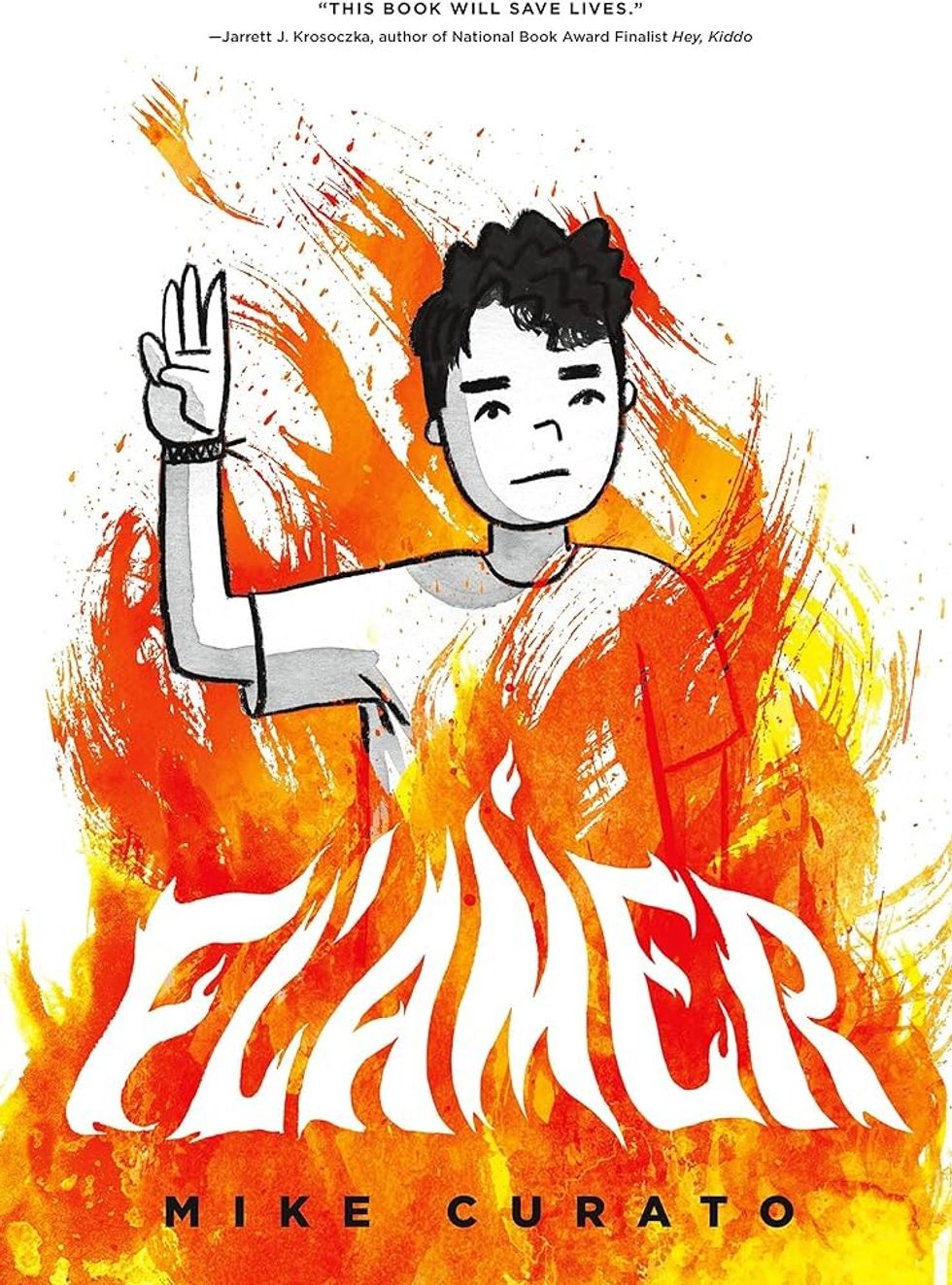
— Alex Gino for “Melissa” (previously published as “George”) from Scholastic. “Melissa” has appeared on the American Library Association’s Top Ten Most Challenged Books list every year since its publication. The children’s novel follows a 10-year-old transgender girl named Melissa, known as “George” to her family, whose one wish is to play the role of the talking spider Charlotte in her fourth-grade class’s production of “Charlotte’s Web.” The novel was at the center of the 2018-19 Oregon Battle of the Books controversy, a school reading challenge that two school districts refused to participate in because of the inclusion of “Melissa” on the reading list.
— George M. Johnson for “All Boys Aren’t Blue” from Farrar, Straus and Giroux. A coming-of-age memoir, Johnson details their ’90s youth in Plainfield, New Jersey, with a focus on coming to terms with their Black and queer identity while also addressing Black, queer male readers today as they search for role models and representation in their own lives. In 2021, a Flagler County school board member and a retired teacher filed a criminal complaint against the Florida school’s superintendent for carrying the book.
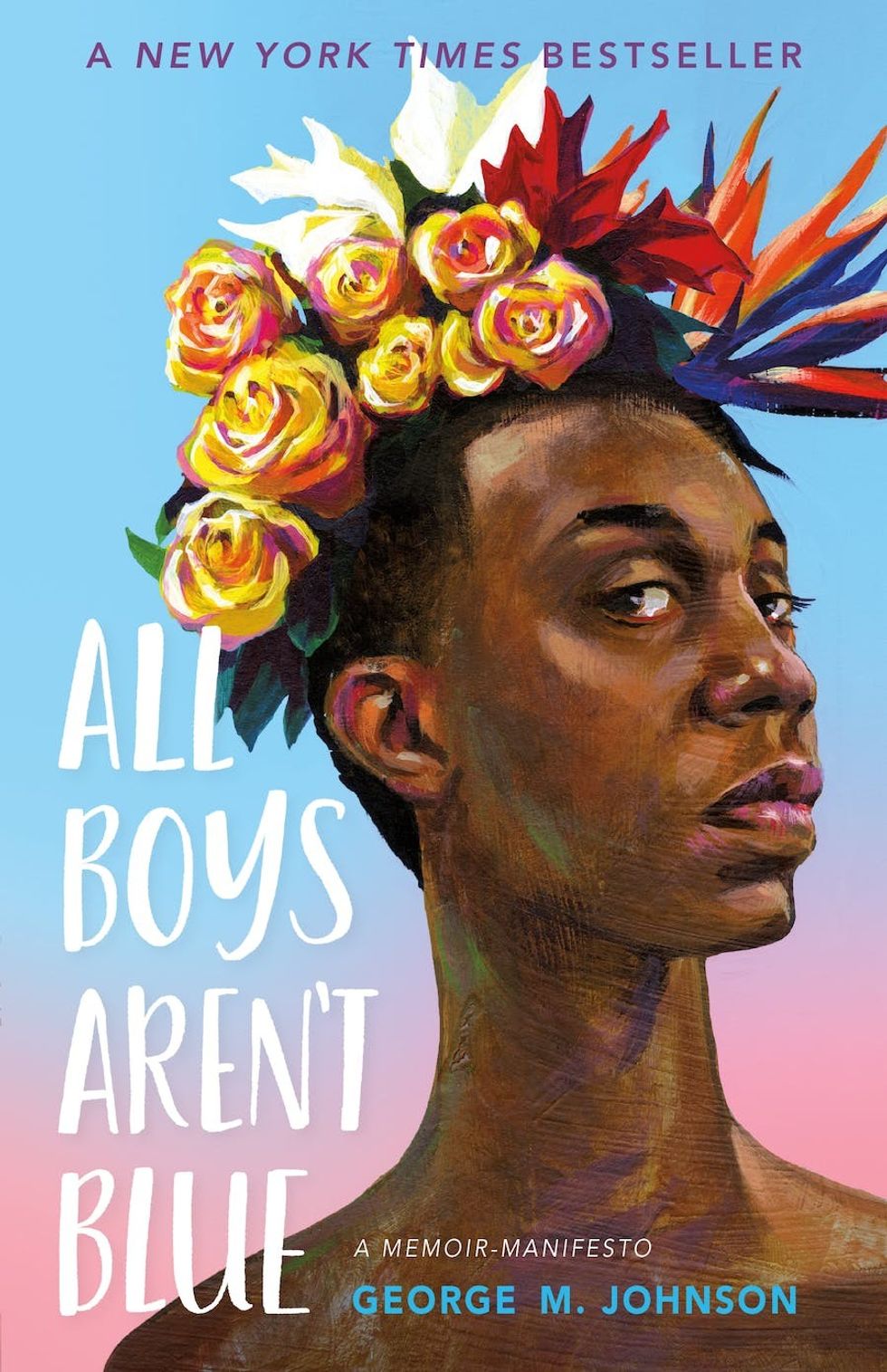
— Maia Kobabe for “Gender Queer” from Simon and Schuster. The graphic novel written and illustrated by Kobabe has been in the eye of the book-banning storm since its publication, publicly challenged by conservative politicians like South Carolina Gov. Henry McMaster and Virginia Gov. Glenn Youngkin, among others, citing the novel to be “obscene for unrestricted viewing by minors.” In a town hall in 2023, Youngkin was called out on his views on the book and trans youth by a transmasculine Arlington high school student named Niko. “Look at me,” Niko said to Youngkin. “I am a transgender man. Do you really think that the girls in my high school would feel comfortable sharing a restroom with me?”

— Jelani Memory for “A Kids Book About Racism” from Penguin Random House. The young reader’s book for ages 3-6 was initially written for Memory’s own children — his four white step-children and two Black biological children — before he submitted the book for publication. The introduction tells children, “This is a book about racism. For reals! And yes, it really is for kids. It’s a good book to read with a grownup. Because you’ll have lots to talk about afterward.”
The ceremony’s Lifetime Achievement Award was presented by NYCLU’s Lee Rowland to the incomparable author of beloved young adult books, Judy Blume, who joined the audience digitally from her home in Key West, Florida.
Since the publication of “Are You There God? It’s Me, Margaret” in 1970, the name Judy Blume has been synonymous with the inner heart of girlhood. The author of classics like “Blubber,” “Tiger Eyes,” and “Forever...,” Blume has not only captured the complexity of puberty as childhood innocence slips away and the shadow of adulthood looms, but taken the emotions and plights of young girls seriously. Tackling stories centering on faith, death, virginity and love, Blume’s novels continue to be a lifeline to readers grappling with understanding a world that often deliberately hides uncomfortable truths, even when it comes to a girl’s own body and mind.
“As someone who argued with [former White House communications director] Pat Buchanan over masturbation, I’m sorry to say I’ve heard a lot [when it comes to challenging books],” Blume said at the ceremony. “It is different today. It is scarier because it is coming from the government more and more, and from state legislatures. It is very political now. We just have to keep going. We just have to keep working together.”
Her advice to her fellow authors, as well as to young aspiring novelists, was clear: “You’ve got to knock the critic off one shoulder, and you’ve got to knock the censor off the other shoulder. When you’re locked up in your little room writing, you cannot think of what will happen. You just have to go for it.”
The Salisbury Winter Sports Association (SWSA) will host its annual Junior Jump Camp, a two-day introduction to ski jumping, on Saturday and Sunday, Dec. 27 and 28, from 9 a.m. to 2 p.m. at Satre Hill in Salisbury.
The camp is open to children ages 7 and up and focuses on teaching the basics of ski jumping, with an emphasis on safety, balance and control, using SWSA’s smallest hill. No prior experience is required.
The cost is $50 per child and includes instruction and lunch on both days. For more information or to register, visit www.skireg.com/swsa-camp or email info@jumpfest.org
Jesse Bunce, first selectman of North Canaan.
LITCHFIELD — The Northwest Hills Council of Governments welcomed six newly elected municipal leaders Thursday, Dec. 11, at its first meeting following the 2025 municipal elections.
The council — a regional planning body representing 21 towns in northwest Connecticut — coordinates transportation, emergency planning, housing, economic development and other shared municipal services.
Barkhamsted First Selectman Meaghan Cook, Goshen First Selectman Seth Breakell, Kent First Selectman Eric Epstein, Norfolk First Selectman Henry Tirrell, North Canaan First Selectman Jesse Bunce and Torrington Mayor Molly Spino were each elected to their post in November.
They filled the seats of their predecessors on the COG, who were each given a toast of appreciation: Nick Lukiwsky (Barkhamsted), Todd Carusillo (Goshen), Marty Lindenmeyer (Kent), Matt Riiska (Norfolk), Brian Ohler (North Canaan) and Elinor Carbone (Torrington).
COG Executive Director Rob Phillips said the outgoing members were given a going away mug that read “You’re living the dream still.” Members voted to appoint Warren First Selectman Greg LaCava to fill a vacancy on the Council’s Executive Committee. COG members voted by paper ballot, and LaCava defeated Burlington First Selectman Doug Thompson for the vacant seat.
Ryan Segalla takes a fadeaway shot over a defender.
FALLS VILLAGE — Housatonic Valley Regional High School’s boys basketball team defeated Pine Plains High School 60-22 in a scrimmage Tuesday, Dec. 9. The non-league preseason game gave both sides an opportunity to run the court ahead of the 2025-26 varsity season.
HVRHS’s senior-heavy roster played with power and poise. The boys pulled ahead early and kept their foot on the gas through to the end.
By halftime the score was 33-8. Junior varsity players subbed in for the second half, but not before the starters got some in-game dunk practice. By the end Housatonic totaled 60 points to Pine Plains’ 22.
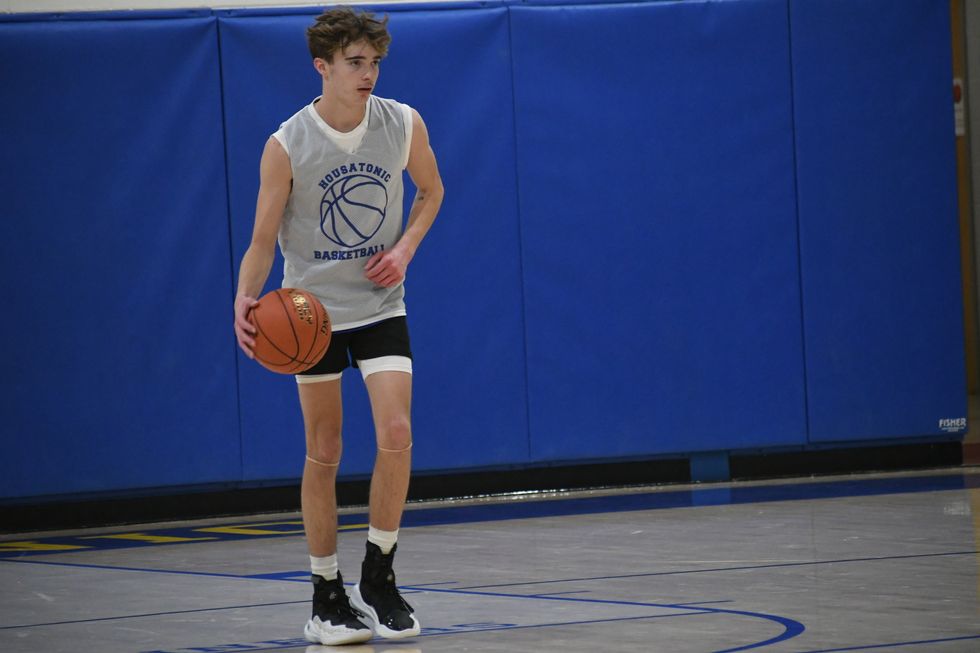
Nick Crodelle led the Mountaineers offensively with 13 points. Anthony Labbadia and Wyatt Bayer scored nine points each. Anthony Foley scored eight points. Owen Riemer and Ryan Segalla each scored seven points. Peyton Bushnell hit a three-pointer. Jaxon Visockis and Henry Berry each scored two points.
HVRHS begins Berkshire League competition on the road at Nonnewaug High School Tuesday, Dec. 16, with a 6 p.m. tip off.
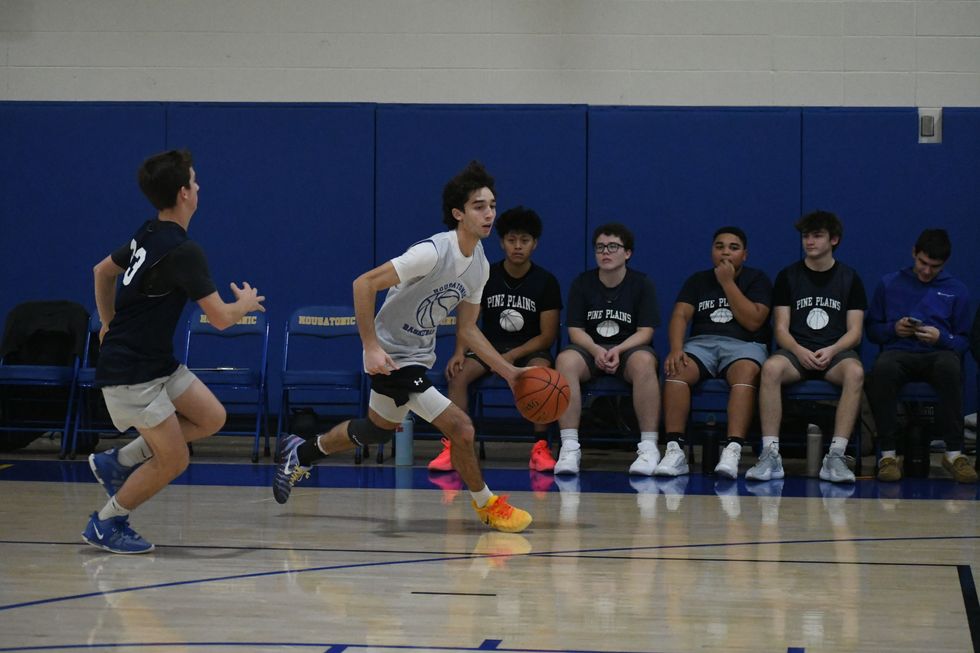
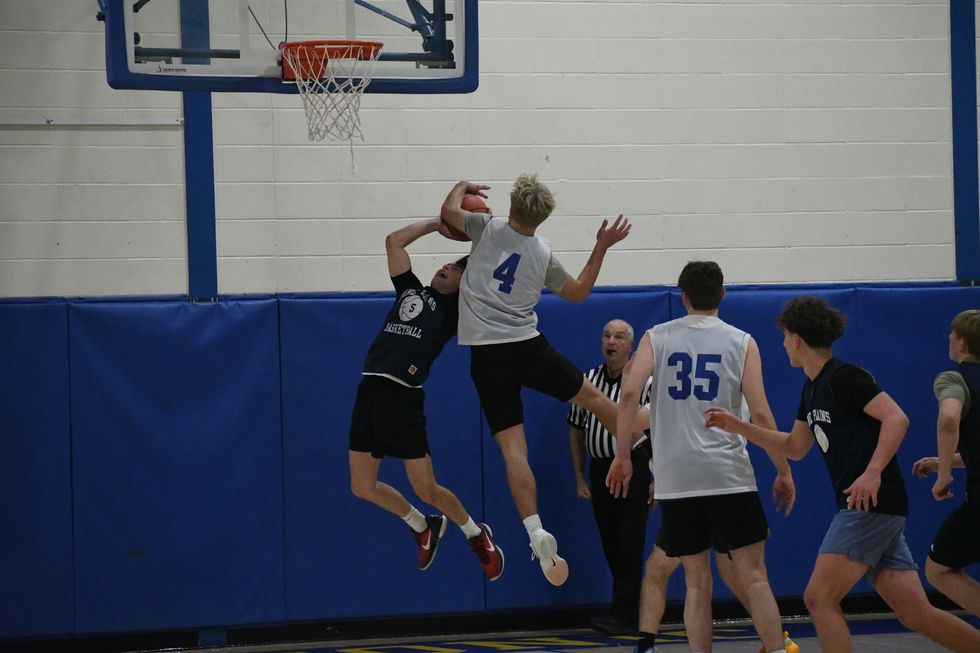
Katie Moore delivers toys to the Stuff a Truck campaign held by the Kent Volunteer Fire Department last weekend. Donated toys are collected so that parents, who need some assistance, may provide their children with gifts this Christmas. Accepting the donation are elves Fran Goodsell and Karen Iannucci
KENT — Santa’s elves were toasty warm as they collected toys for the children of Kent.
Keeping with annual tradition, Fran Goodsell and Karen Iannucci manned the Stuff a Truck campaign sponsored by the Kent Volunteer Fire Department on Saturday, Dec. 6, and Sunday, Dec. 7. Sitting in front of a fire pit in the firehouse parking lot between donations from residents, they spoke of the incredible generosity displayed every season. That spirit of giving was clear from the piles of toys heaped on a table.
“This is always so gratifying,” said Goodsell, noting that certain businesses, including High Watch Recovery Center, Wilson’s, and Kent and South Kent schools needed a “shout out” for all they’ve done. She said South Kent School focuses on gifts for older children, which is a group that often is overlooked.
Unwrapped contributions are sought for children 1 to 15 years old who might otherwise find little or nothing from Santa, they said. The bounty will be set up at the Community House on Thursday, allowing parents to come and take what they want. If there are still items left, grandparents are invited to “shop.”
The atmosphere was festive Saturday, as a stuffed dog began barking a Christmas tune whenever someone walked in front of it. A large decked-out bear posted at the parking lot entrance reminded passersby of the event. Visiting children were able to get a close-up look at the fire truck and walk through the firehouse if they wished.
Goodsell and Iannucci were very grateful to those who donated wood for the fire pit. “And so many asked if they could bring us coffee or hot chocolate,” said Iannucci.
Goodsell said many who came talked about having grown children who were recipients of the gifts when their families were struggling. “They are so glad to be able to give back,” she said.